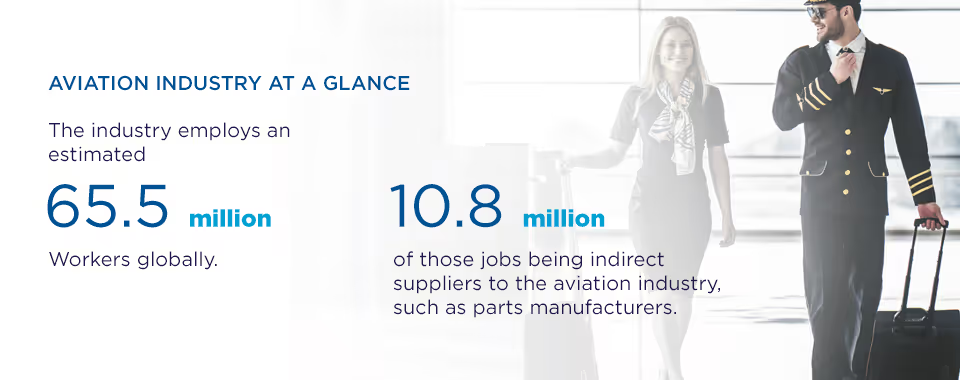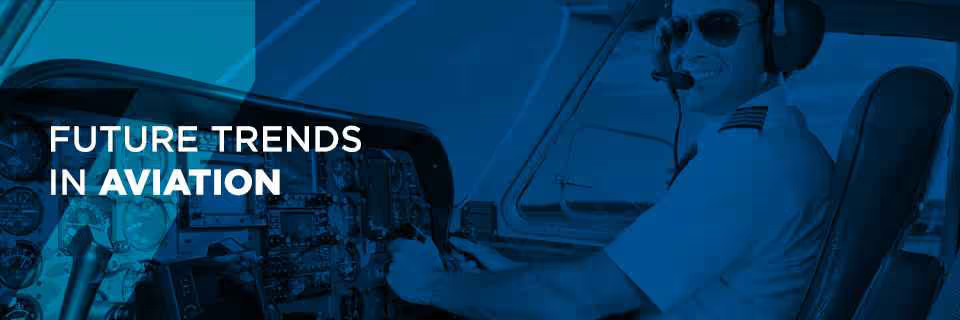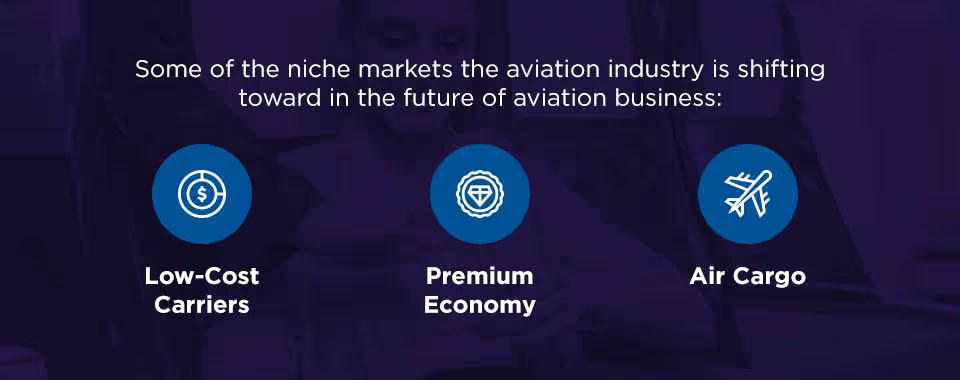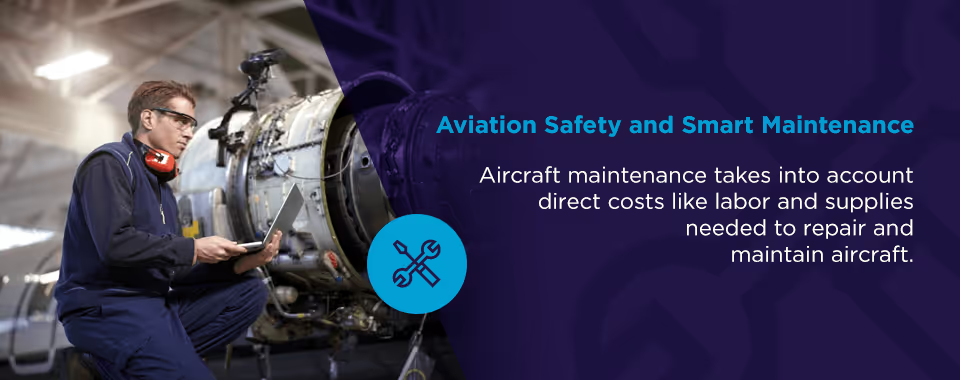
The aviation industry is a massive global economic contributor, supporting millions of jobs and transporting billions of passengers. It’s laid the groundwork for some of history’s most important technological, design and engineering breakthroughs. Despite ongoing challenges the airlines face operationally, the future of aviation will see the industry continue to adapt and find innovative solutions in the areas of technology, environment and safety.
Air transportation is growing increasingly accessible and desirable thanks to an interconnected global community and a thriving tourism sector combined with a strong safety record. The industry employs an estimated 65.5 million workers globally, with 10.8 million of those jobs being indirect suppliers to the aviation industry, such as parts manufacturers. In 2017, airlines globally carried more than four billion passengers, generating global revenue of $534 billion USD for that year.

According to the International Air Transport Association (IATA), air travel worldwide will double to 8.2 billion travelers in the year 2037, largely as a result of airlines taking advantage of the current aviation industry trends. Despite the latest trends driving industry growth, the aviation industry as a whole will also need to focus on how to continue to meet these demands while adhering to increasing safety and environmental regulations and battling geopolitical turbulence. With such tight competition and significant economic stakes, it’s no wonder the airline industry is experiencing shifts in the form of aviation future trends that airlines must leverage to stay competitive, maintain safety and improve efficiency.

The aviation industry is experiencing tremendous growth and must adapt to ongoing challenges that come with explosive expansion. Aviation industry professionals and experts can be better equipped to navigate these changes and leverage them successfully by being aware of the top trends forecasting the future of aviation.Aviation industry trends impact airline business models, customer satisfaction and job markets. Technology-based trends and advancements help improve aircraft maintenance, design and safety. Future trends in aviation are also determined by regulatory and political factors like environmental and safety requirements as well as international trade relations.Knowing what aviation future trends are on the rise and how they impact the industry is key to maintaining the world’s reliance on flight transportation. Here are the top aviation future trends impacting the industry.
Like every other wide-serving industry, aviation must adapt its conventional business model to meet changing consumer demands. Strategically diversifying the traditional business model will allow airlines to satisfy passengers, capitalize on international trade and serve potential niche markets that are currently underserved.

As air transportation becomes increasingly accessible to more people with rising incomes, airline companies are looking to serve specific niche markets with revised revenue models. Here are some of the niche markets the aviation industry is shifting toward in the future of aviation business:
The aviation industry’s impact on the environment and human health has been under the microscope for the past several decades. The airline industry has been largely scrutinized as a significant contributor to global carbon emissions despite it accounting for only 2% of the world’s total amount. In response to global priorities on minimizing CO2 emissions, aviation industry associations like IATA, individual airline companies and various airline councils around the world are working to develop broad-based environmental policies that improve airline eco-efficiency and sustainability on a global level.

IATA is instrumental in developing the standard policies that address environmental impact, assisting airlines in improving environmental performance and educating airlines about how they can reduce CO2 emissions and other measurable effects. The organization has set ambitious industry goals that reflect their priority focus on environmental sustainability. For example, one of IATA’s key objectives is to reduce net CO2 emissions by 50% by the year 2050 compared to its 2005 levels. Given its significant emphasis and potential role in environmental protection, here are some of the innovative solutions the industry is employing to meet this aviation future trend:
The global aviation industry is expected to undergo significant job growth to meet the needs propelled by several other aviation industry future trends. According to the results from an IATA survey administered to international Human Resources professionals in the aviation industry, 75% of respondents expect there will be an increase in jobs in ground operations, customer service and cabin crew roles over the next two years.

The industry is set to experience this employment growth thanks to the following aviation industry job trends:
Being such an essential aspect of air travel, no other aspect of aviation has a greater need to embrace new technology to streamline processes than airport security. The challenge, however, has always been how do airports efficiently process so many travelers without compromising a standard of high security? The field of biometrics could help the aviation industry achieve both. Biometrics is the technology used in surveillance and identification that has to do with body calculations and measurements. With this technology, airport security can screen and identify passengers quicker and more accurately to help shorten line lengths and wait times. Some of the calculations and measurements that biometrics takes into account include:

Biometric scanners can be used at the gate to help board passengers faster and keep the lines moving quickly. Over 30 U.S. airports are already using biometrics as part of the boarding process. Their success with this technology only demonstrates how biometrics is set to be an important aviation industry trend — not just for improving efficiency, but for improving travel safety as well.
Aviation is an intensely complex operation, requiring countless on-the-spot decisions to be made every time a flight lands and gets ready for takeoff again. Improved communication can help ground operators make smarter decisions, particularly in the area of managing flight delays and cancellations and the ripple effect that such events cause through the airline’s operations. How airlines achieve this communication is with cockpit connectivity. Cockpit connectivity is a term used to describe a growing aviation industry trend regarding the communication between what’s going on in the cockpit and how the team on the ground is affected by it. Having aircraft set up with cockpit connectivity helps ground operators know in advance what types of decisions they’ll have to make when the aircraft lands.

Being connected to the cockpit helps operators know the status of various vital metrics, allowing them to make real-time decisions and improve efficiency. Essentially, cockpit connectivity and the ability for the aircraft to communicate with ground crew members is essential for two main reasons:
Though setting up the infrastructure required for successful cockpit connectivity is a considerable investment, savvy airlines are adopting this technology because they see the economic payback it delivers from customer satisfaction and resource management. Decisions made through cockpit connectivity could end up saving the aviation industry an estimated $15 billion annually, not to mention reduce CO2 emissions by 21.3 million tons annually by 2035.
Maintenance is a significant overhead cost of airline operations. According to Boeing, airlines spend $40 billion annually on aircraft maintenance. In fact, aircraft maintenance is considered an industry in and of itself — Maintenance, Repair and Overhaul (MRO) — and involves comprehensive and systematic checks, servicing, repairs, replacements, installations, upgrades and more.Aircraft maintenance takes into account direct costs like labor and supplies needed to repair and maintain aircraft. It also factors in indirect costs such as the losses airlines face from delays and cancellations due to unscheduled and unplanned maintenance. All of this takes a toll on customer satisfaction, costing airlines billions each year.

To rein in costs associated with aircraft maintenance, the industry is adopting “smart” maintenance practices that help streamline the jobs of aircraft engineers and maintenance technicians. They diagnose problems sooner and prescribe the right course of maintenance while improving overall turnaround times and efficiency.Airline MRO spending is expected to increase by more than $30 billion in the next decade, making the future of aircraft maintenance a vital economic trend for the industry. Here are some of the “smart” maintenance technologies and aviation mechanics trends innovative airlines are adopting:
Without question, safety is the number one priority of airlines and aircraft manufacturers. To ensure aviation is as safe as it can be, consumers and industry experts must ask hard questions regarding how to improve aircraft safety through advanced testing technology to enhance standards across the industry.Aviation remains the safest form of mass transportation, with an average of only one fatality in every 16 million flights. In 2017, the industry had its safest year ever, with no fatalities recorded. Even with such a stellar safety record, the entire industry remains focused on how to continually improve safety and keep aircraft safety standards at all-time highs. The only way to do this is to enhance aircraft testing and subsequently implement refined standards that come from rigorous testing.

A strong industry-wide emphasis on testing combined with increased demand for air travel is leading experts to predict that by 2023, the aerospace testing market will reach an estimated $5.4 billion. Here are some of the trends the industry is experiencing in the field of aviation testing:
Partnering with aviation and aerospace testing experts has never been more important for the aviation industry. While many companies establish in-house testing infrastructure, it’s expected that outsourcing testing will be the highest area of growth driving the aerospace testing market from now until 2023.Given the projected increase in demand for outsourced aerospace testing, it’s vital that companies find experienced testing experts with the most advanced capabilities to ensure aircraft safety now and long into the future.
What is the future of aviation? For the industry as a whole, a stable future looks like striking a balance between meeting demand growth while still maintaining and improving safety and maintenance standards to keep the industry’s image of the “safest way to travel.” To preserve this image and keep consumer confidence at an all-time high, airlines must partner with aviation testing experts who can help them deliver the safest aircrafts possible.

Safety testing experts like NTS can help the aviation industry achieve its future outlook in safety, testing and evaluation standards. For over 50 years, we have provided the aviation sector with advanced testing and engineering capabilities that provide safer, stronger and more precise aircraft products.Talk to an NTS expert today for more information on our range of testing programs that engineer a safer way to fly. Request a quote today to learn how we can successfully fulfill your project needs.